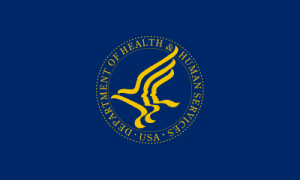OIG Issues Updated Criteria for Implementing Its Permissive Exclusion Authority
On April 18, 2016, the Department of Health and Human Services, Office of Inspector General (HHS-OIG) issued updated criteria for assessing and evaluating the imposition of permissive exclusions under Section 1128(b)(7) of the Social Security Act. The update replaces the 1997 Federal Register notice and demonstrates the OIG’s ongoing interest in the implementation and enforcement of its exclusion authority.
Background
The Office of Inspector General (OIG) uses its exclusion authority to protect Federal health care programs from individuals or entities “whose continued participation constitutes a risk to the programs and their beneficiaries.” As discussed in other Exclusion Screening articles, Medicare will not pay for any items or services furnished, directly or indirectly, by an excluded individual or entity, and the failure to screen for exclusions can result in civil money penalties and overpayments.
The OIG’s permissive exclusion authority authorizes the OIG to impose a period of exclusion in a number of different circumstances. However, the update focuses primarily on the evaluation of health care fraud cases, and this article outlines the criteria that the OIG will consider in making exclusion determinations in these matters.
The OIG’s Evaluation of Risk to Federal Health Care Programs
The OIG has a number of different administrative options. According to the update, the OIG evaluates which administrative action to impose based on where an individual or entity falls on a spectrum. The OIG’s spectrum considers the individuals or entities involved and the risks posed to patients and federal health care programs by their continued participation. Depending on the circumstances presented, the OIG will usually pursue one of the following actions with respect to settling a civil or administrative health care fraud case:
Exclusion. As discussed above, the OIG uses exclusion in order to protect the Federal health care programs from persons who pose a high risk to the programs and their beneficiaries. In general, the OIG will not pursue exclusion unless the facts and circumstances indicate that one of the other administrative approaches inadequately protects the Federal health care programs.
Heightened Scrutiny. The OIG imposes heighted scrutiny in “rare circumstances” when it determines that a corporate integrity agreement (CIA) is necessary, but the person refuses to agree to appropriate integrity obligations with OIG. The OIG evaluates whether to impose exclusion or other administrative actions, including “unilateral monitoring” of the person’s compliance with Federal health care programs.
Integrity Obligations. The OIG often reserves exclusion when it is unnecessary to protect the Federal health care programs if the person agrees to appropriate integrity obligations. These “appropriate integrity obligations” are consistent with the OIG’s goals to strengthen a person’s compliance program, promote compliance so that future issues may be prevented or identified and resolved, and enhance the OIG’s oversight of the person.
No Further Action. The OIG will occasionally conclude that a person presents a relatively low risk to Federal health care programs and decide that neither exclusion nor integrity obligations are necessary. The OIG outlines two common scenarios in which a person will be classified as low risk with no further action taken: (1) the absence of egregious conduct (e.g., patient harm, intentional fraud), or (2) the person with whom the Government is resolving a fraud case is a successor owner, and the successor owner has an existing compliance plan in place, purchased the entity after the fraudulent conduct occurred, or similar circumstances.
Release (Self-Disclosure). The OIG usually gives a person release of 1128(b)(7) exclusion without requiring integrity obligations in two limited circumstances: (1) when the person self-discloses the fraudulent conduct, cooperatively and in good faith to the OIG, or (2) the person agrees to robust integrity obligations with a State or the Department of Justice, and the OIG determines that the obligations outlined are sufficient to protect the Federal health care programs.
Factors Used To Determine Mandatory & Permissive Exclusion
The OIG articulated several factors it will use to determine where an individual or entity falls on the risk spectrum. At the high end of the spectrum, the OIG will pursue exclusion, whereas at the low end, the OIG may provide an exclusion release without additional obligations. The OIG named four broad categories of factors: (1) Nature and Circumstances of Conduct; (2) Conduct During Investigation; (3) Significant Ameliorative Efforts; (4) History of Compliance. A summary of the risk factors is included below:
Nature and Circumstances of Conduct
- Higher Risk: Conduct that causes or had the potential to cause any adverse impact to program beneficiaries, recipients, or other patients. g., physical, mental, or financial impact.
- Higher Risk: Conduct that is continual, repeated, part of a pattern of wrongdoing, or occurs over a substantial period of time.
- Higher Risk: Individuals who led or planned the unlawful conduct, or individuals with managerial or operational control who led or planned the unlawful activity on behalf of an entity.
- Higher Risk: History of prior fraudulent conduct, including a person’s history of judgments or settlements, refusal to enter into a Corporate Integrity Agreement (CIA), previous entrance into a CIA, or breach of a prior CIA.
- No Affect: Absence of criminal sanctions.
Conduct During Investigation
- Higher Risk: Obstructing or impeding an audit or investigation.
- Higher Risk: Concealing the unlawful conduct from the Government or others.
- Higher Risk: Failure to comply with a subpoena within a reasonable time period.
- Higher Risk: Adverse licensure action as a result of the conduct or the inability to pay appropriate damages, assessments, or penalties to resolve a fraud case.
- No Affect: Prompt response to a subpoena is expected (emphasis added).
- Lower Risk: Self-disclosure of the conduct cooperatively and in good faith after an investigation or before an investigation.
- Lower Risk: Clearly demonstrating acceptance of responsibility for the conduct.
Significant Ameliorative Efforts
- Lower Risk: Significant changes in the entity, including taking appropriate disciplinary actions against individuals responsible for the conduct, devoting more resources to the compliance function, or selling the entity at an arm’s-length transaction to a third party with a history of compliant participation.
History of Compliance
- Higher Risk: Absence of a compliance program that incorporates the seven elements of an effective compliance program.
- No Affect: The existence of a compliance program incorporating the seven elements.
- Lower Risk: A history of significant self-disclosures made in good faith to OIG, CMS, or CMS contractors prior to becoming aware of an investigation.
For the last three years, the OIG has displayed a persistent interest in and concern for exclusion related issues. This updated guidance is another indication of the OIG’s continued focus on exclusions, and it should alert health care providers of the need to implement an exclusion screening protocol as part of a robust compliance program.
Erin Archer is the author of this article. Feel free to contact us at 1-800-294-0952 or online for a free consultation.


